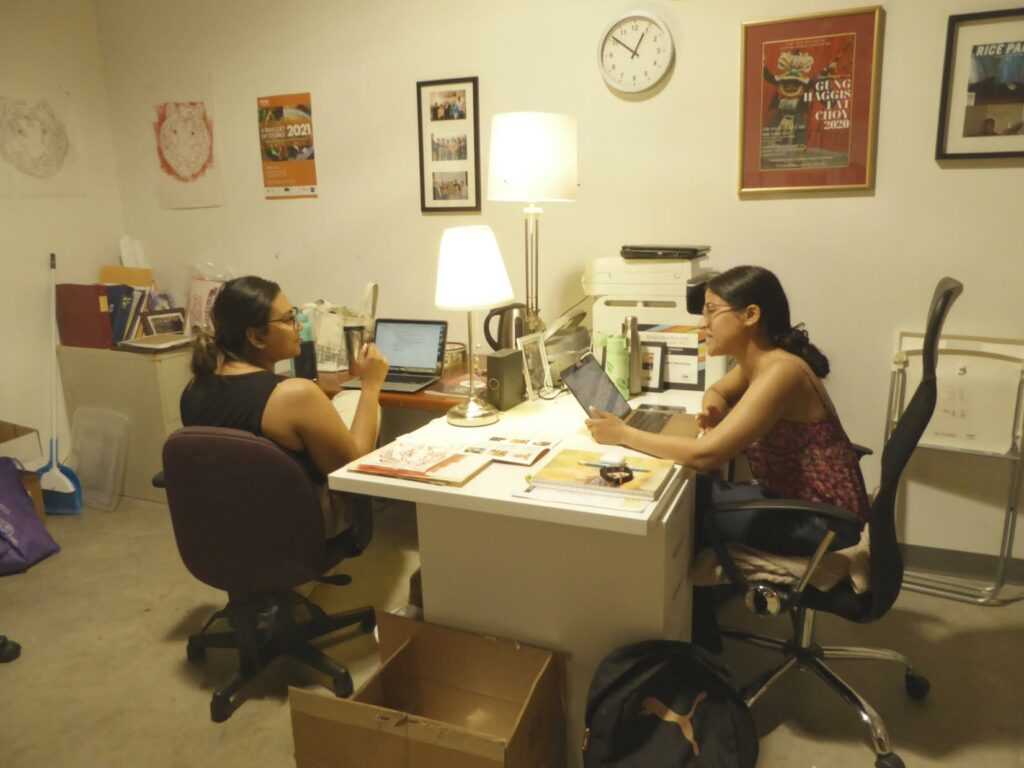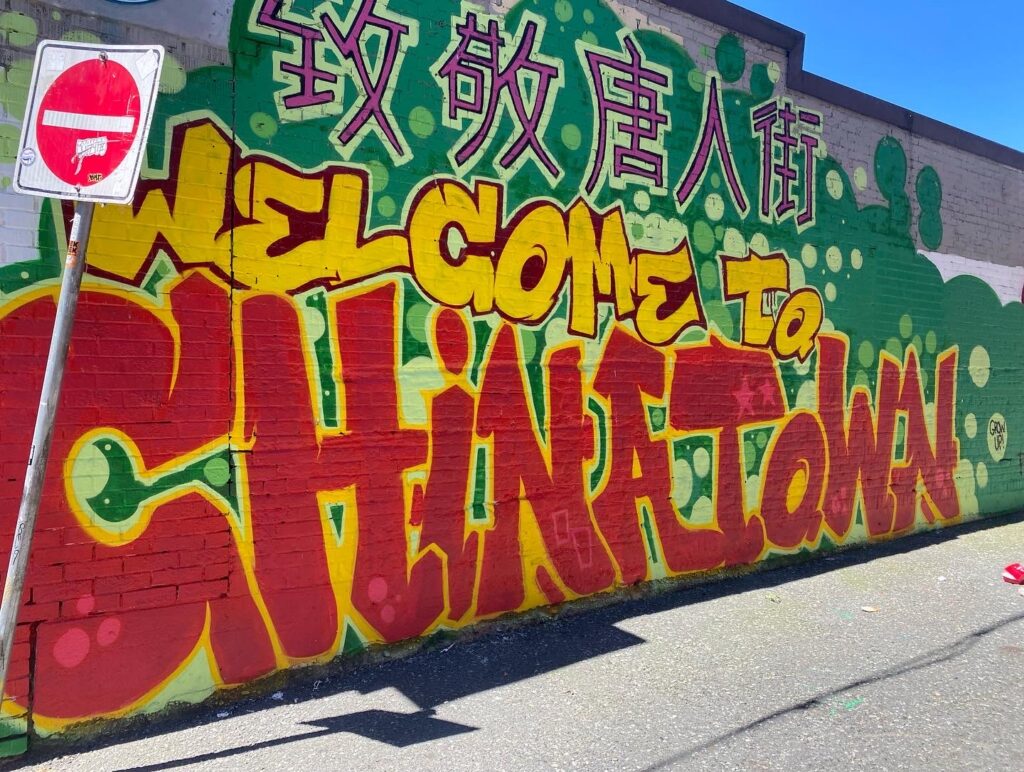Chinatown Vancouver, Shanghai Alley, Vancouver, BC, Canada
During my CFE experience with the Pacific Canada Heritage Centre (PCHC) – Museum of Migration, I engaged in land-based learning. This museum is one without walls but their office is located in Chinatown. Chinatown is located on Coast Salish land and is primary inhabited by generations of Chinese Canadians and members living on the DTES (Downtown East Side), including a large population of Indigenous folks. The streets of Chinatown are filled of fragrances of Chinese medicine (dried herbs, fruits, fish, etc.) and amazing food, including my new favourite restaurant New Town Bakery. I had never tried a steamed pork bun before spending my CFE in Chinatown and by the end I think I devoured at least 20 of them. Getting to this location came with it’s challenges including safety concerns since the building we worked in was gated and had its own security given the poverty in the area and constant break ins. Initially, I felt really uncomfortable and regret being at this location because the building was difficult to get to and the office was very small and dark (no windows). But as I learned about the historical significance of the surrounding buildings and historical Chinese Canadians who made a huge difference for POC in Canada my perspective totally changed. I got off my privileged high horse and looked beyond the peeling paint and vandalism on the streets.
In relation to our inquiry question, “what stories does the land have to tell?”, Chinatown has more stories than I could have even imagined. I personally learned stories about Chinese Canadian entrepreneur stories, the effects of Chinese head tax on migrants, important historical figures such as Chinese army veterans, the historical significance of certain buildings and places, as well as housing. I got to meet some locals who are also members of PCHC like Ada Con who’s great grandfather built their family home that they currently live in still in Chinatown. We went on many walking tours where oral storytelling was signifiant in understanding the histories of the streets. One of the stories that stuck with me the most was a story about the elder Chinese community coming together to protest against the building of a hotel in Chinatown that had no connection to the Chinese community and would block the Chinese Cultural Centre which is a very important building in the area and they won a city agreement. Gentrification is a major issue taking place in this area all the time. My biggest takeaway from this experience was that if we as a community do not visit, invest, and take care of these important spaces to certain communities (especially marginalized folks), their important stories, histories, and communities will slowly disappear. If this land were to be stripped of this association to Chinese culture and history in Canada, we would be taking away a rich history that students, children, and families should know and learn about. Part of becoming a new teacher is taking on decolonial lens and with this lens that I have gained, I can understand the importance of keeping these spaces safe from further effects of colonization such as gentrification.
Here are some questions that I have thought about that can help move my inquiry thinking forward…
- How can we amplify the stories of the land?
- How can school in communities affected by gentrification amplify local people and their stories?
- How can schools take part in restoring or taking care of culturally signifiant places in their local community?
- How can we encourage more storytelling in school spaces?
- How can we make walking tours that focus on storytelling safe, accessible, and understandable for young children?
R.L.


